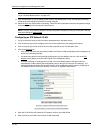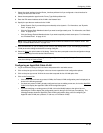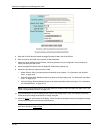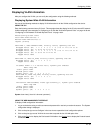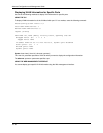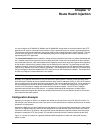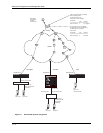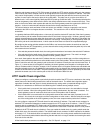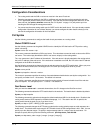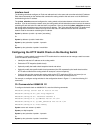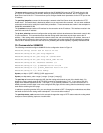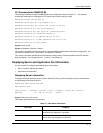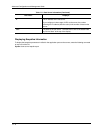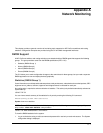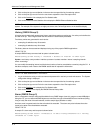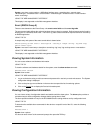
Advanced Configuration and Management Guide
Configuration Considerations
• The routing switch and the SLB or real server must be in the same IP sub-net.
• Place the management station for the SLB on a different sub-net than the one that contains the web site
(HTTP application) whose health you are checking. If the web site and the management station are on the
same sub-net, the ip dont_advertise command (see “CLI Syntax” on page 17-4) will prevent you from
reaching the SLB through the management station.
• You cannot use the same routing switch port for OSPF and for the health check. If the port already contains
configuration information for one of these features, you cannot configure the other feature unless you first
remove the configuration information for the first feature.
CLI Syntax
Use the following commands to configure the health check parameters on a routing switch.
Global CONFIG Level
Use the following command at the global CONFIG level to identify the VIP that has the HTTP port the routing
switch is checking.
Syntax: server real <name> <vip>
The <name> parameter identifies the SLB or real server. This value does not need to match a value on the SLB or
real server. The value simply identifies the SLB or real server uniquely on the routing switch.
The <vip> parameter is the IP address of the web site. If the web server is directly attached to the routing switch,
this is the IP address of the web server. If the web server is attached to an SLB, the VIP is the virtual IP address
configured on the SLB for the web site.
Use the following commands to change the interval and retry values for the HTTP health check. When you press
Enter after the first command, the CLI changes to the TPC/UDP port configuration level for port 80.
Syntax: server port 80
Syntax: tcp keepalive <interval> <retries>
The <interval> parameter specifies the number of seconds between health checks sent by the routing switch. You
can specify a number from 2 – 60 seconds. The default is 5 seconds.
The <retries> parameter specifies how many times the routing switch will resend a health check if the web site
does not respond. You can specify from 1 – 5 retries. The default is 2.
Real Server Level
After you enter the server real… command shown above, the CLI changes to the Real Server level.
The following command enables the HTTP health check for the web site. The health check is disabled by default.
Syntax: port http keepalive
The following command is optional and changes the default method and URL for the health check. By default, the
routing switch sends a HEAD request for the default homepage, “1.0”. The slash in the URL is optional; the
routing switch inserts the slash for you if you leave it out.
Syntax: port http url “[GET | HEAD] [/]<URL-page-name>”
The following command changes the HTTP status codes that the routing switch accepts as valid responses to a
health check. The default status code range for HTTP health checks in SLB configurations is 200 – 299. You can
specify up to four discrete ranges. To specify a single message code for a range, enter the code twice. For
example to specify 200 only, enter the following command: port http status_code 200 200.
Syntax: port http status_code <range> [<range> [<range> [<range>]]]
17 - 4



